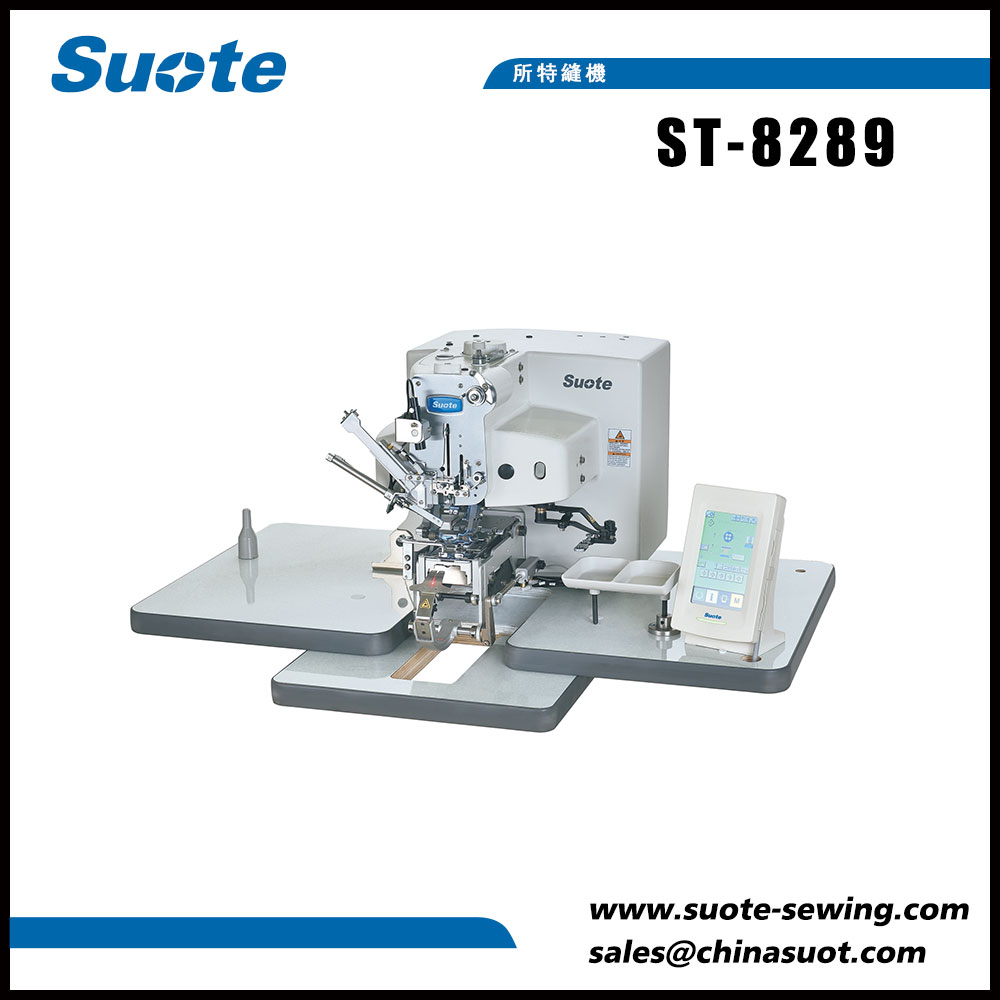What Are the Safety Precautions to Follow When Using a Button Attaching Sewing Machine?
2024-09-30

What Are the Safety Precautions to Follow When Using a Button Attaching Sewing Machine?
1. Always disconnect the machine from the power source before cleaning or servicing the machine.
2. Avoid wearing loose-fitting clothes, jewelry, and other accessories that can get caught in the machine.
3. Always keep your hands away from the needle area when the machine is in operation.
4. Do not attempt to sew on heavy-duty fabrics if the machine is not designed for that purpose.
5. Always read and follow the manufacturer's instructions on how to operate the machine.
What are the maintenance tips for the Button Attaching Sewing Machine?
1. Regularly clean the machine to avoid dust and debris buildup.
2. Lubricate the moving parts according to the manufacturer's instructions.
3. Keep the machine covered when not in use to avoid dust accumulation.
4. Always use high-quality needles and thread to avoid damaging the machine.
5. Check the machine's tension periodically to ensure it is within the recommended range.
How to troubleshoot Button Attaching Sewing Machine?
1. Ensure the thread is correctly inserted before starting the machine.
2. Check the bobbin area for lint buildup, which can cause the machine to jam.
3. Check the needle for bending or damage, which can cause the machine to skip stitches.
4. Adjust the tension if the machine is producing loose or tight stitches.
5. Clean the machine thoroughly if it becomes noisy during operation.
In summary, the Button Attaching Sewing Machine is a vital tool in the garment making and textile industry. It is efficient, easy to use, and helps in improving productivity. However, it's important to follow safety precautions, perform regular maintenance, and troubleshoot any issues that may arise.
Zhejiang Suote Sewing Machine Mechanism Co.,Ltd is a leading manufacturer of sewing machines. The company specializes in the production of various types of sewing machines, including the Button Attaching Sewing Machine. Our machines are of high quality, durable, and easy to operate. To learn more about our products and services, visit our website at https://www.suote-sewing.com. For inquiries or orders, contact our sales team at sales@chinasuot.com.10 Scientific research papers related to sewing machine:
1. R. Cucu et al., (2019). "Smart Sewing Machine for Garment Manufacturing Industry," International Journal of Electrical and Computer Engineering (IJECE), Vol. 9, No. 6, pp. 5038-5046.
2. K. Han, K. Park, and D. Cho (2018). "Development of a Smart Sewing Machine for Wearable Technology Applications," Journal of Textile and Apparel, Technology and Management, Vol. 11, No. 1.
3. N. K. Batra and S. Kaushik (2018). "Investigation of Sewing Machine Needles for Improving Fabric Handling," Journal of Textile Engineering & Fashion Technology, Vol. 4, No. 4.
4. K. R. Baral, L. Su, H. Hu, and C. Lu (2017). "Effect of Sewing Machine Parameters on Sewing Quality of Knit Fabrics," Journal of Engineered Fibers and Fabrics, Vol. 12, No. 3.
5. J. Bae, W. Kim, and Y. Kim (2017). "Optimization of Sewing Machine Needle and Thread Parameters for Garment Sewing Quality," International Journal of Clothing Science and Technology, Vol. 29, No. 1.
6. J. H. Park, H. K. Hong, and J. S. Choi (2016). "Development of an Automatic Sewing Thread Tension Control System for Industrial Sewing Machines," Journal of the Korean Society of Clothing and Textiles, Vol. 40, No. 6.
7. F. Wang, L. Su, and Y. Gao (2016). "Modeling of Sewing Machine Needle Thread Interactions for Garment Seam Strength," Journal of Materials Science & Engineering: A, Vol. 657, pp. 368-376.
8. Q. Y. Han, Z. J. Li, X. Cheng, and J. R. Zhou (2015). "Study on Flexible Fabric Sewing and Its Realization of Industrial Sewing Machine Automation," Transactions of the Chinese Society for Agricultural Machinery, Vol. 46, No. 10, pp. 152-158.
9. J. Yan, H. J. Li, and F. Qian (2015). "Effect of Sewing Machine Needle Parameters on Seam Quality of Denim Fabrics," Journal of Textile Research, Vol. 36, No. 2, pp. 53-55.
10. M. S. Haque and M. M. K. Khan (2014). "Investigation of Factors Affecting Seam Pucker on Sewing Machines," Journal of Textile and Apparel, Technology and Management, Vol. 8, No. 4.






